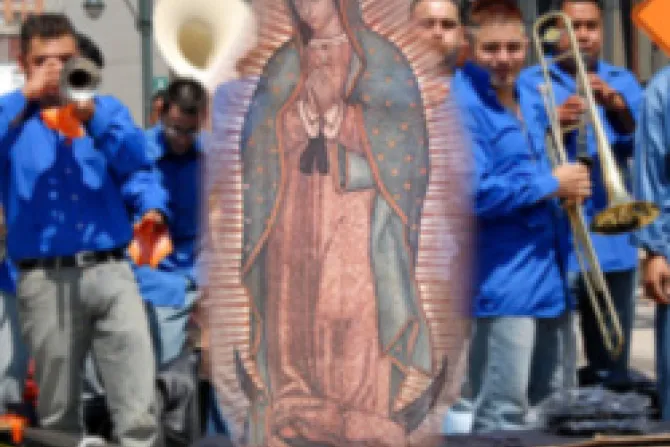Hartford, Conn., Mar 17, 2010 / 04:23 am
A new study of Hispanics shows they comprise an increasingly large percentage of the Catholic Church in the United States. While immigrant influx has helped keep the American Catholic population stable, the more immigrants assimilate into American society the less likely they are to identify as Catholic.
Hispanics also mirror a larger national trend towards non-identification with religion.
The results come from the American Religious Identification Survey 2008 (ARIS) and were reported in a recent press release from Trinity College in Hartford Connecticut. The report was titled “U.S. Latino Religious Identification 1990-2008: Growth, Diversity & Transformation.”
“Over the past 18 years, there are probably few phenomena that have changed America and American religion more than the growth of the Latino population,” commented Juhem Navarro-Rivera, a research fellow at Trinity’s Institute for the Study of Secularism in Society and Culture (ISSSC), who conducted the ARIS survey.
Over the 18-year period considered by the study, the addition of nine million Latino Catholics accounted for most of the 11 million additions to the U.S. Catholic population. Latinos now comprise 32 percent of all U.S. Catholics in 2008, compared to 20 percent in 1990.
However, Catholic identification has slipped among the 31 million Latino adults, from 66 percent in 1990 to 60 percent in 2008.
There has also been a significant jump in the number of Latinos who do not adhere to a religion. In 1990 they made up 900,000 people, six percent of the population. They now number four million, 12 percent in 2008, and are the fastest growing segment, according to the ARIS survey.
Jehovah’s Witnesses and some Protestant sects, such as Adventists and non-denominational Christians have tripled their number of adherents in recent years, though the number of Pentecostal adherents only kept pace with Latino population growth.
The longer a Latino has lived in the United States, the less likely he or she is to be Catholic. Those most proficient in English are less likely to identify themselves as Catholic but more likely to self-identify as affiliated with conservative Christian traditions or no religion.
Of those with no religion, 61 percent are male. Among those who are Pentecostal, 58 percent are female.
Marital status also shows distinct patterns, ARIS says. Among unmarried persons cohabitating outside of marriage, 15 percent are without religion, 11 percent are Catholics, and seven percent are non-Catholic Christians. Latinos who say they are separated are overwhelmingly Catholic women. Researchers suggest this means that Latinas are more loyal to Catholic teaching against divorce and remarriage than Latino men.
There are fewer than 400,000 married Latinas who have no religion, while there are over 1.1 million married Latinos without religion. According to ARIS, this suggests that many couples and homes are not “religiously homogeneous.”
The larger proportions of those without religion and those in Protestant sects are under age 30. Those with no religion are more likely to have a college degree, while those in Protestant sects are the least college educated. Mainline Protestant Latinos have the highest household incomes, sectarian Protestants the lowest, and non-denominational Hispanics are the most suburbanized.
Regionally, non-religious Latinos are now 28 percent of all non-religious Texans, up from 15 percent in 1990.
In California, they are 24 percent of all non-religious Californians, up from 10 percent in 1990. They are now 56 percent of Catholics in the state, up five points from 1990.
Latino Catholics and those without religion are most likely to prefer the Democratic Party, while the non-Catholic Christians prefer the Republican Party.
(Story continues below)
“Whereas Latino immigrants are contributing significantly to the stability of American Catholicism, the younger generation and the U.S.-born population are tending to polarize between those moving away from religion and those moving towards conservative Christian traditions,” summarized Trinity professor Barry A. Kosmin.


